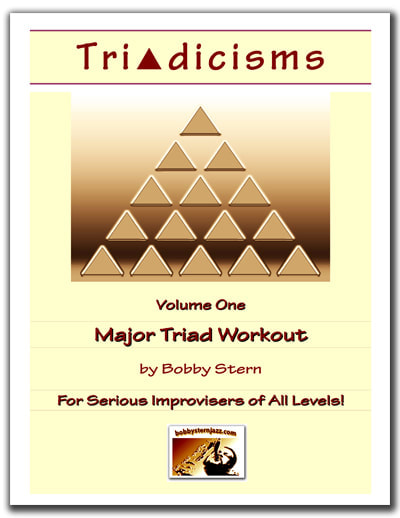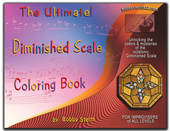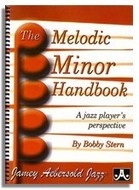
Get to know them well - for they are your friends - and can magically turn a bland musical offering into a more daring and exciting one.
I've invited them over for tea and crumpets, so hang out here for a moment and keep reading.
Ahhh, here they are now!
Taking a look at example #1 below, we find a short 2-bar descending melodic sequence - a ii-V7-I cadence in C Major, to be exact. The quartet of 4-note shapes are all similar, if not exact interval carbon copies.
Upon closer inspection, we find that the last two notes of each 4-note grouping all connect via an ascending half-step (E-F, C#-D / B-C, F#-G). The last note of each pair (F, D, C & G) - all being chord tones - are the "targets". The first note is part of the "approach", as well as being designated as the "lower neighbor" in each case.
In examining each lower neighbor / approach note, we find that the E against a D min7b5 would be a chord tone (a Maj 9th) if we considered it as part of the F Melodic Minor system (6th mode - D Locrian #2). If we're thinking instead, of Eb Major (7th mode - D Locrian), it would be a non-scale tone, since there is no E in Eb Major. If we're thinking a straight G (Bb, C#, E) half / whole step Diminished Scale, they'd all be scale tones.
Likewise, over the next chord (G7), the C# could be considered a non-scalar lower neighbor, as it resolves up a semitone to the target note D. The sequence continues over the bar line with diatonic Mixolydian material before resolving to the C Maj tonic. The F#, as the next to last note (like the C# in the previous bar) is probably best looked at as a non-scalar lower neighbor, rather than as a #11, before resolving to the target note G. The point here is that the labeling, while not of primary importance, depends on context, as well as one's intention.
Ex. 1 - A 2-bar ii-V7-I sequence featuring four 3-note enclosures, with the target being the final note of each 4-note cell.
The first 3 notes of each 4-note group form a 3-note approach (+st,+ct,-ch,ct = scale tone from above to chord tone from above to chromatic from below to chord tone as target). In the case of the B in the second bar, it's both a scale and chord tone, as well as a chromatic lower neighbor.
So now that you've met your neighbors, it's a real good idea to keep in touch. Downloading the PDF and taking the above sequence through the 12 keys is a great start toward becoming lifelong pals!
B. Stern
*** A Snakey, Serpentine Warm-Up! ***
*** The Joys of Half & Whole Steppin'! ***
*** Flip 4 Real! - Using Mordents in a ii-V7 Melodic Line ***
Add them to your library!





 RSS Feed
RSS Feed









